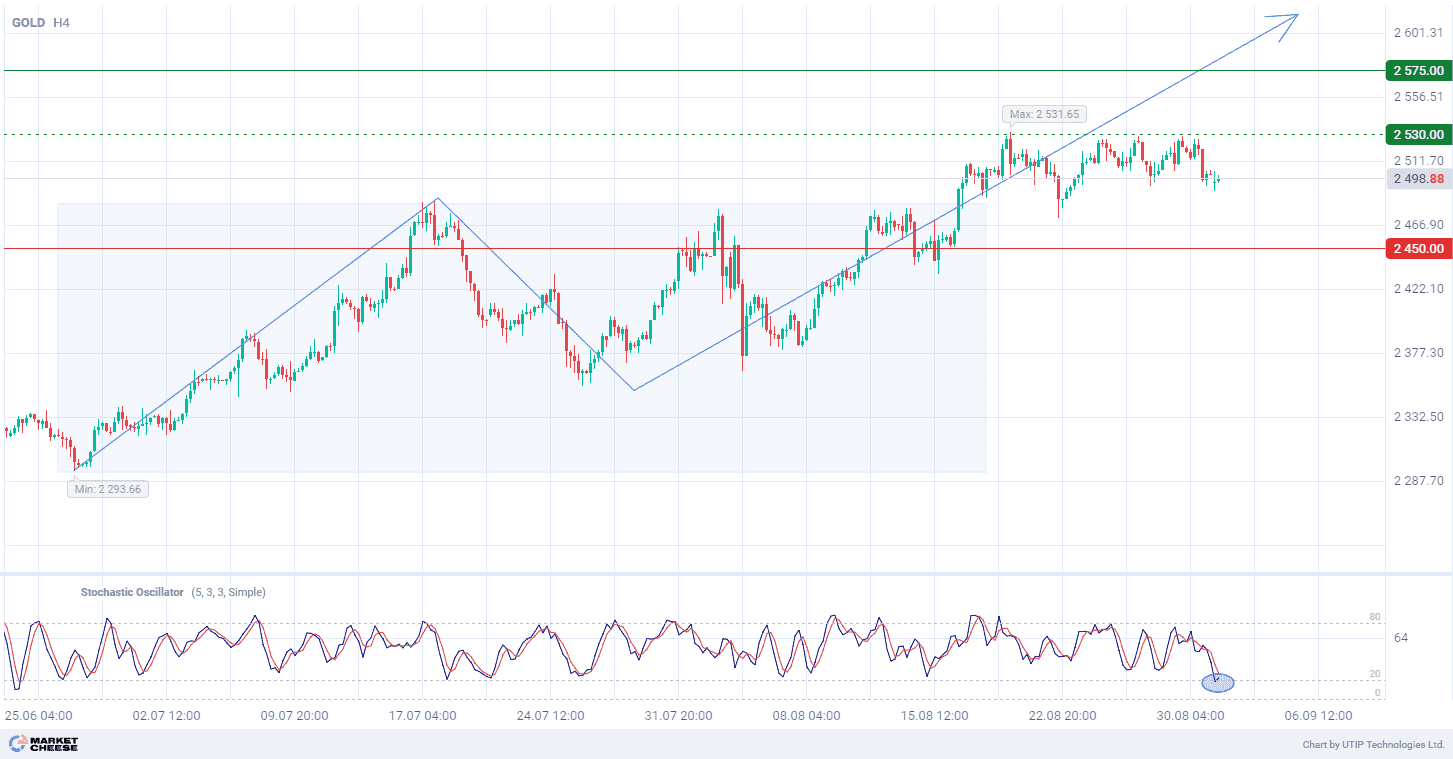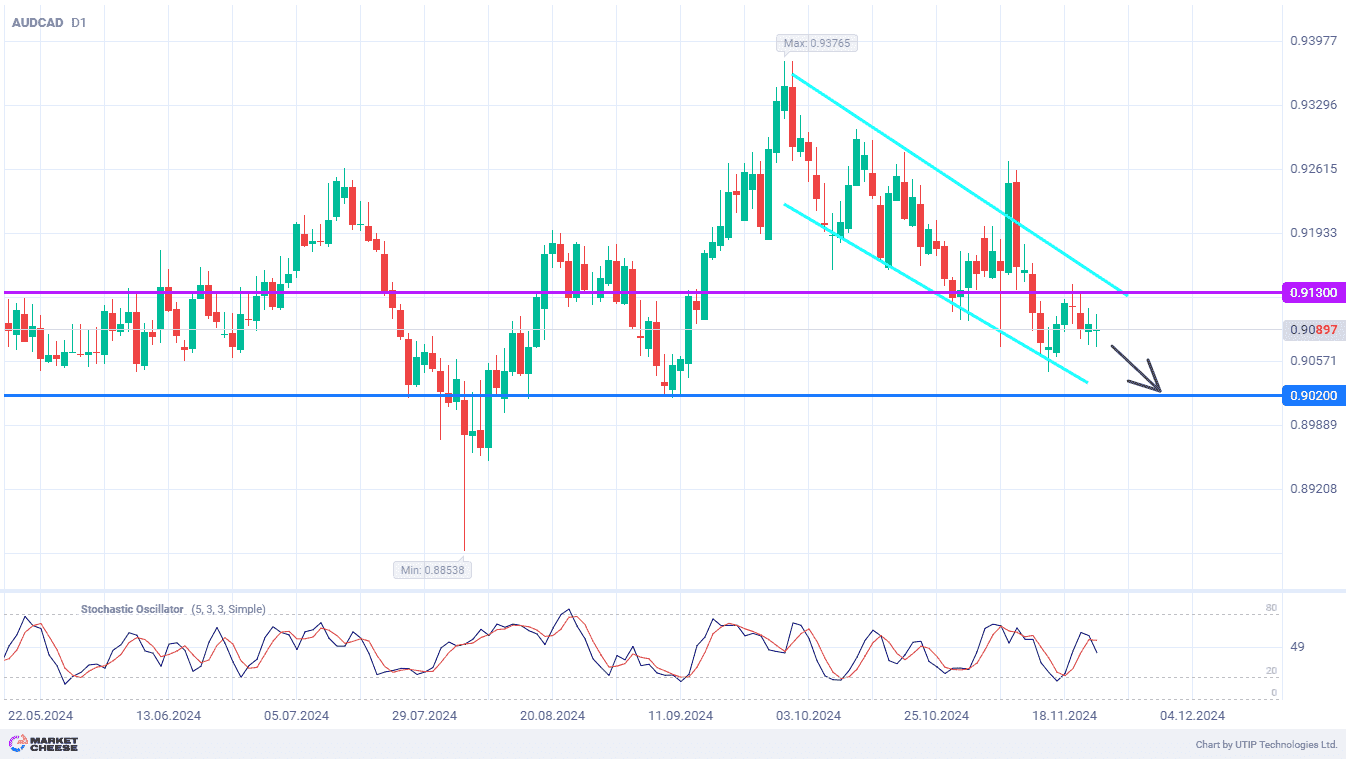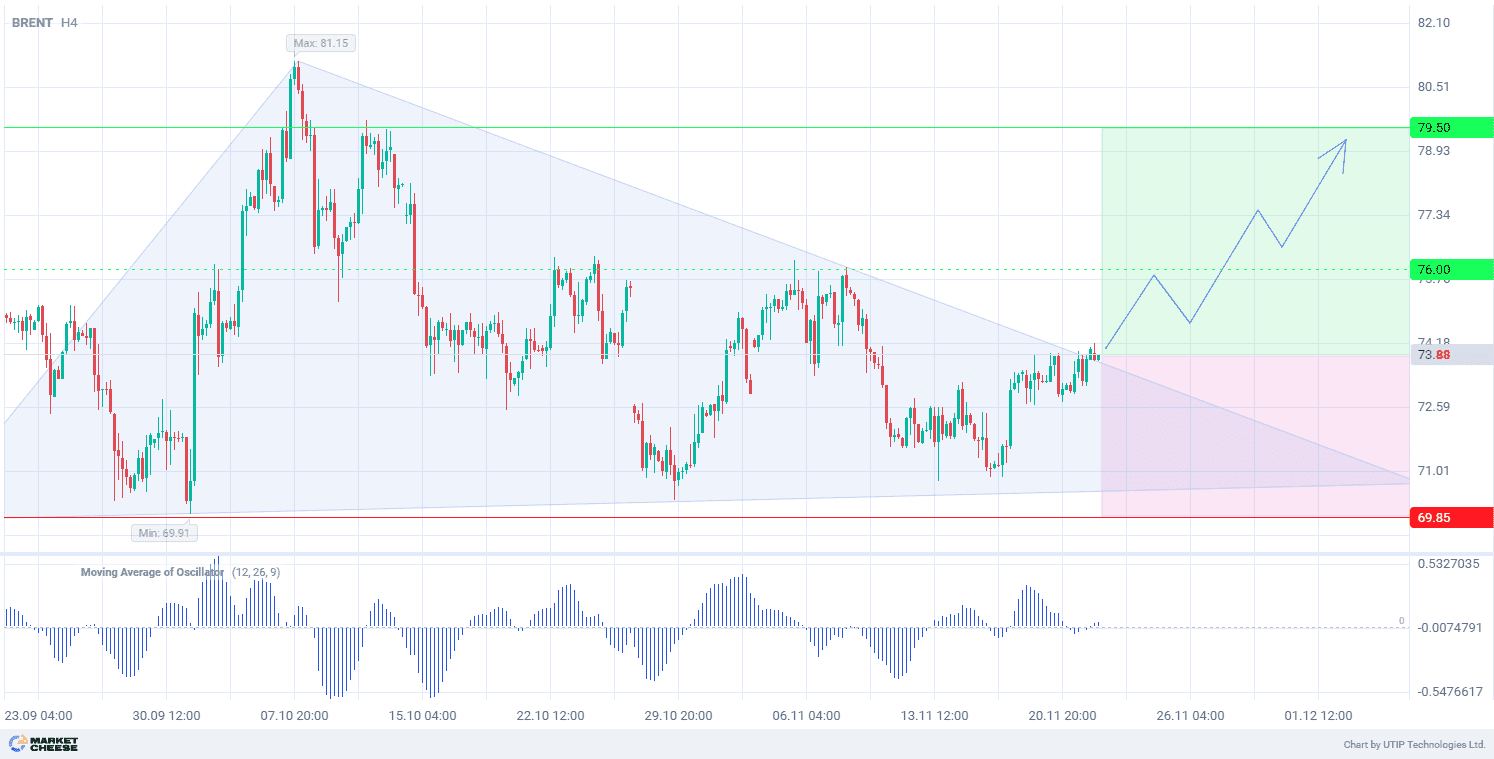On Monday, gold prices stabilized below the level of $2 500 after falling by 1% during the previous trading session. The main reason for this decline was the strengthening of the dollar, caused by the latest data on Personal Consumption Expenditures (PCE) price index in the U.S. for July. Friday’s release of 0.2% PCE growth data complicated the probability of a significant interest rate cut by the Federal Reserve (Fed) in September.
However, prospects of looser monetary policy in the U.S. could help limit gold’s losses as lower interest rates reduce the opportunity cost of holding gold. According to the CME FedWatch tool, there is a 67% probability of a 25 basis point reduction in the Fed’s borrowing costs.
Investors are now focused on upcoming economic data releases in the U.S. The ISM Manufacturing Purchasing Managers’ Index (PMI) for August is expected to be released on Tuesday, followed by the Services PMI on Thursday. Labor market data will be released on Friday, including the non-farm payrolls report, unemployment rate and average hourly earnings for August.
At the technical level, gold quotes went beyond the corrective rectangular corridor on the H4 chart. In terms of wave analysis, the price is forming the third ascending wave. The breakthrough of the top of the first wave at the level of 2484.00 has already occurred, indicating a potential strengthening of the upward momentum. The Stochastic Oscillator indicator curve (standard values) is in the oversold zone. This may indicate a possible change in the market sentiment towards buying.
Signal:
The short-term outlook for GOLD is to buy.
The target is at the level of 2575.00.
Part of the profit should be fixed near the level of 2530.00.
The Stop-loss could be placed at the level of 2450.00.
The bearish trend is of a short-term nature, so it is suggested to limit the trading volume to no more than 2% of your capital.










